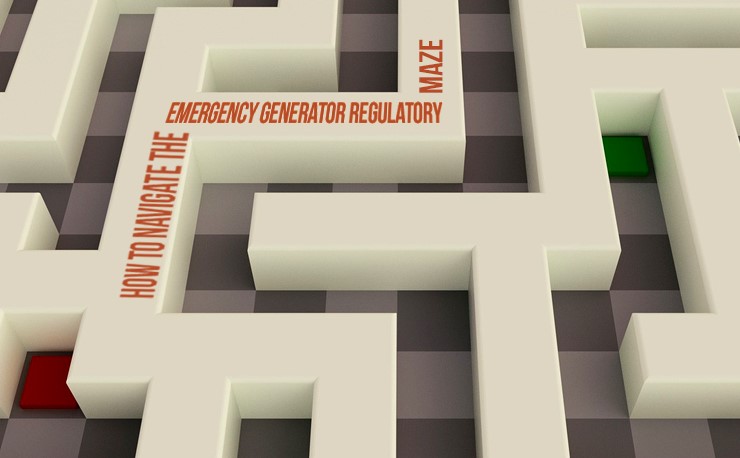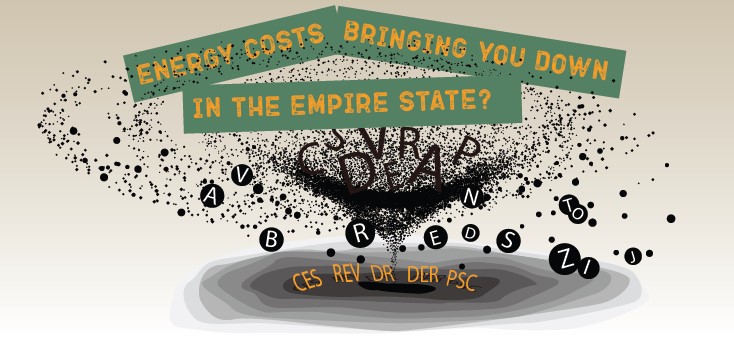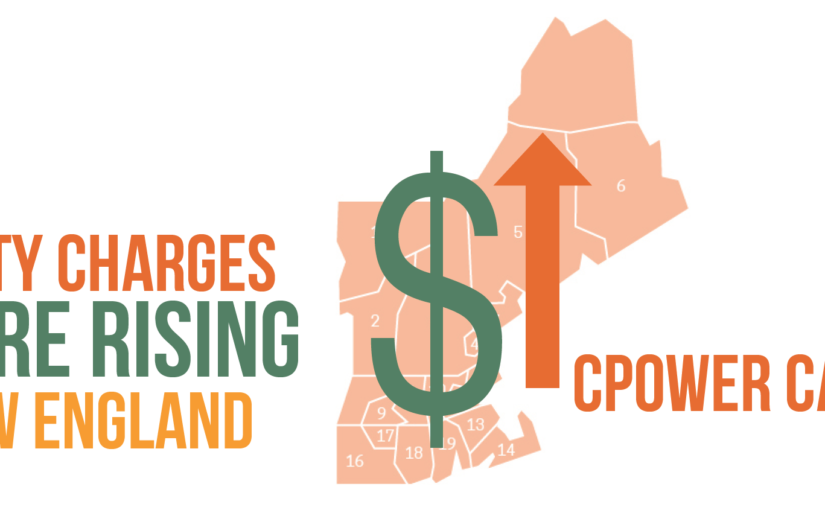PECO Demand Response
Eversource Demand Response Resources
Surviving New EPA Rules and the Emergency Generator Regulatory Maze
Is your organization one of the thousands of commercial/industrial energy customers that use back-up generators (BUGs)? Are they used as emergency generators (a.k.a., EGs or gensets) in demand response (DR) programs? If so, 2016 may have felt like an episode of the “Survivor” reality show, except instead of the usual cast of GenX characters and challenges you were unfortunately tasked with surviving a maze of ever-changing genset regulations.
Bad News, Good News: The past year saw important changes regarding the use of stationary reciprocating internal combustion engines (RICE) that continue to evolve at the federal level as administered by the U.S. Environmental Protection Agency (EPA), which itself is in now in the midst of changes with newly-confirmed administrator Scott Pruitt at the helm. EPA rules provide that BUGs that are intended for emergency use when blackouts occur are exempt from reporting requirements and most emissions regulations. The bad news is that EPA changes significantly restricted the circumstances where such generators can be compensated for operations while the grid is still up. The good news is many such generators can achieve “non-emergency” status without equipment upgrades by meeting specific permitting and reporting requirements.
Bit of History – 50-hour Rule No Longer Applies: In early 2016, it was determined that EGs could potentially participate in DR programs under a different rule (referred to as the “50-hour rule”). A coalition of DR providers including CPower took specific steps to clarify the applicability of the 50-hour rule with EPA as well as explore avenues to address concerns with the prior 100-hour rule as related to EG use for DR:
- We funded an extensive legal review on the 50-hour rule which outlined the case for allowing EGs to continue DR participation with this rule as a basis.
- We shared our well-documented analysis with EPA, who responded that they were not in agreement.
- While we believe the EPA’s interpretation is not aligned with the actual language in the regulation nor the structure of the electricity market, federal agencies such as EPA enjoy the latitude to interpret their regulations in any manner they deem appropriate.
- While CPower will continue to try to convince EPA that our well-documented position bears merit, all DR service providers clearly need to comply with EPA’s current interpretation.
Further confounding the situation is that a generator classified as “nonemergency” under federal regulations could be deemed “emergency” under state and/or local regulations. Recent examples include the Rule 222 that applies to permitting in New York; while California is moving from the traditional environmental permitting approach towards utility-based restrictions.
What This Means to You: As a DR participant with EGs, you should always be aware of the nuances defining EG assets that do not meet EPA’s interpretations of local requirements as well as the Federal Non-Emergency standard for DR curtailments. This applies even if your current DR service provider may advise you otherwise (especially regarding the use of EGs via the 50-hour rule). Any reputable vendor certainly should not expose you to any potential EPA violations or penalties. And if you indeed find out that EGs are not permitted for use in DR programs, make sure your service provider has an experienced engineering team who is willing to work with you to achieve the best possible alternative curtailment strategies.
On the Positive Side: Again, the good news is that in many instances, you can still use EGs to participate in DR programs and support grid reliability. A good curtailment service provider or DR aggregator should be able to assist clients with specific steps for permitting and retrofits so their engines can still participate wherever possible. At CPower, we have helped several clients with permitting so their engines can now effectively participate in emergency DR events to support the grid. Some of these services include:
- Helping clients evaluate generation assets for permitting compliance at both the federal and state/local levels
- Upgrading engines with aftermarket controls and/or automated DR (ADR) controls
- Developing recommendations for adding load to optimize use of generators
- Facilitating engine and generator upgrades (either working with a carefully vetted partner or customer-preferred vendor)
Bottom Line: As capacity costs increase, active DR participation becomes even more compelling and relevant. Changes in EPA regulations have impacted the ability of DR customers like you to use stationary emergency generators as part of your load reduction strategies. Luckily, you can look to DR service providers to offer valuable “survival tips” that can bring this episode to a stable ending.
“Thanks to accurate guidance from CPower’s engineering team, our engines were successfully permitted for use in demand response by the state’s Department of Environment. Their in-depth knowledge and tenacity throughout the process clearly contributed to enabling our facilities’ continued participation in the 2017 DR performance season.” – Facilities Director at a large New England based manufacturing firm.
CPower takes a leadership role and shaping market transformation while advocating for our customers to help you navigate the regulatory maze and maximize DR program benefits. The result? Increased energy savings and earnings not just from optimized participation in Emergency DR, but also in non-emergency voluntary programs (like price based Economic DR). In some cases, you can also use your engines for peak-shaving to reduce capacity costs while maintaining compliance with environmental regulations.
Do you have a generator? Does it meet State and EPA guidelines? Are you leveraging it as a demand response revenue resource? Check out our Emergency Generator Decision Tree today to ensure you make the right EG permitting and compliance choices moving forward.
State of Rhode Island Portal
PJM Economic Demand Response
PJM Energy Efficiency
State of Virginia Portal
Managing Rising Costs Amidst the Alphabet Soup of NY Energy Initiatives
If you’re a mid- to large-sized energy user in New York, you’ve likely come across a veritable alphabet soup of acronyms: REV, CES, DR, DER…the list goes on. Many of you who run commercial and industrial (C&I) businesses know that you can actively leverage Demand Response (DR) programs and earn revenue by curtailing load when called upon to do so during emergencies to support grid reliability. Granted, some years have been more rewarding than others since capacity prices ebb and flow in New York just like in other energy markets. Of course, capacity prices have risen substantially since 2012, resulting in increased earnings from DR participation in New York. So what can DR participants across New York expect in 2017 and beyond?
First, a bit of context on REV and CES:
In 2012, Hurricane Sandy hit the East Coast, causing devastation and leaving millions without power. Shortly thereafter, working with the New York governor’s office, New York Power Authority and other state agencies, the Public Service Commission (PSC) launched the landmark Reforming the Energy Vision regulatory proceeding. Now commonly referred to as REV, its goal is to make the power system cleaner, resilient and more affordable. Regulators aim to transform traditional utilities into platform providers — entities that facilitate the deployment of distributed energy resources (DERs) and use them instead of traditional infrastructure. And Demand Response is poised to continue to play a vital role as this initiative evolves.
In simplest terms, the Clean Energy Standard (CES) mandates New York to acquire 50% of its energy from clean resources by 2030. As part of this, it seeks to further that goal by providing zero-emission credits (ZEC) to support upstate nuclear plants that were in danger of closing. In late 2016, the PSC fended off numerous challenges to its adoption of the CES and its subsidy for nuclear power generators. Keep an eye on this space, however, as the PSC’s order doesn’t mean this is finalized (as of this writing in Feb 2017, two court challenges remain pending). Generators and some environmental advocates said the ZEC program — which critics say will cost over $7 billion over its 12-year lifespan — goes beyond the authority granted to the PSC by state law.
Impact on your bottom line:
In the near term at least, REV and CES, while noble causes, are going to lead to increased fixed costs (~$4/MWh) on mid- to large-sized energy consumers. This scenario, however, also presents additional opportunities and specific actions you can take today to offset these costs:
- Increased DR participation especially in new distribution utility programs, and
- Capacity tag management.
New DR Programs: Both the NYISO and New York Electric Utilities offer demand response programs that pay businesses like yours for using less energy when the grid is stressed. Many commercial and industrial businesses in New York aren’t aware of the new summer-only local utility programs available to them via an authorized DR services provider. These programs offer another revenue stream in addition to the NYISO DR program that they may have been enrolled in for years. In 2016 for example, the New York Public Service Commission mandated that local utilities provide a Commercial System Relief Program (CSRP) throughout their entire service territory as part of a statewide effort to develop a new regulatory framework which includes incentives to leverage the deployment of distributed energy resources such as demand response.
Capacity Tag Management: Additionally, there are demand management services that can help significantly lower your capacity charge which make up 20-40% of the total supply portion on your monthly utility bill. The capacity charge is based on your individual capacity tag which, in New York, is determined by your facility’s usage when the NYISO sets its single annual peak hourly demand across the whole system. CPower sends an advanced day ahead demand management notification to reduce your usage when it is likely the NYISO will hit its hourly peak demand, thus reducing your capacity tag and capacity charges for the following year.
In the end, it’s all about implementing smarter techniques to manage your overall energy spend. The NYREV was launched 3+ years ago but it’s more relevant now than ever to survive as a large C&I energy user, as it will certainly change how energy is transacted in the future. At CPower, our job is to stay abreast of these developments and keep you informed about their potential impact. To get started, check out the various programs available in NY and informational videos to learn more on how you can offset rising energy costs in 2017 and beyond.
White Paper: The New England Electric Power Market
In the New England electric power market, sharply rising capacity costs and energy volatility in the New England power market will increase your electricity costs despite relatively low fuel prices and flat usage trends. This white paper explores the underlying reasons, and goes on to explain specific actions commercial and industrial customers can take to mitigate these cost increases.
ISO New England (ISO-NE) is responsible for keeping electricity flowing across the six-state New England region: Connecticut, Maine, Massachusetts, New Hampshire, Rhode Island, and Vermont. In so doing, ISO-NE’s core mission is system reliability.
To ensure reliability ISO-NE oversees the day-to-day operation of New England’s electric power generation and transmission system to keep the energy that generators supply to the grid in near-perfect balance with consumers’ energy demand. To ensure the system maintains adequate generating and transmission capacity to serve current and future needs ISO-NE manages a comprehensive regional pwoer system planning process and the region’s competitive wholesale electricity markets.
White Paper: The Evolving New York Energy Market
In this white paper, CPower’s Mike Hourihan aims to explain how recent events have played a role in shaping both the New York Energy Market’s current state and its evolution. He’ll also attempt to predict what might be in store for the market and how he believes New York businesses can position themselves to better manage their energy today and in the future.







